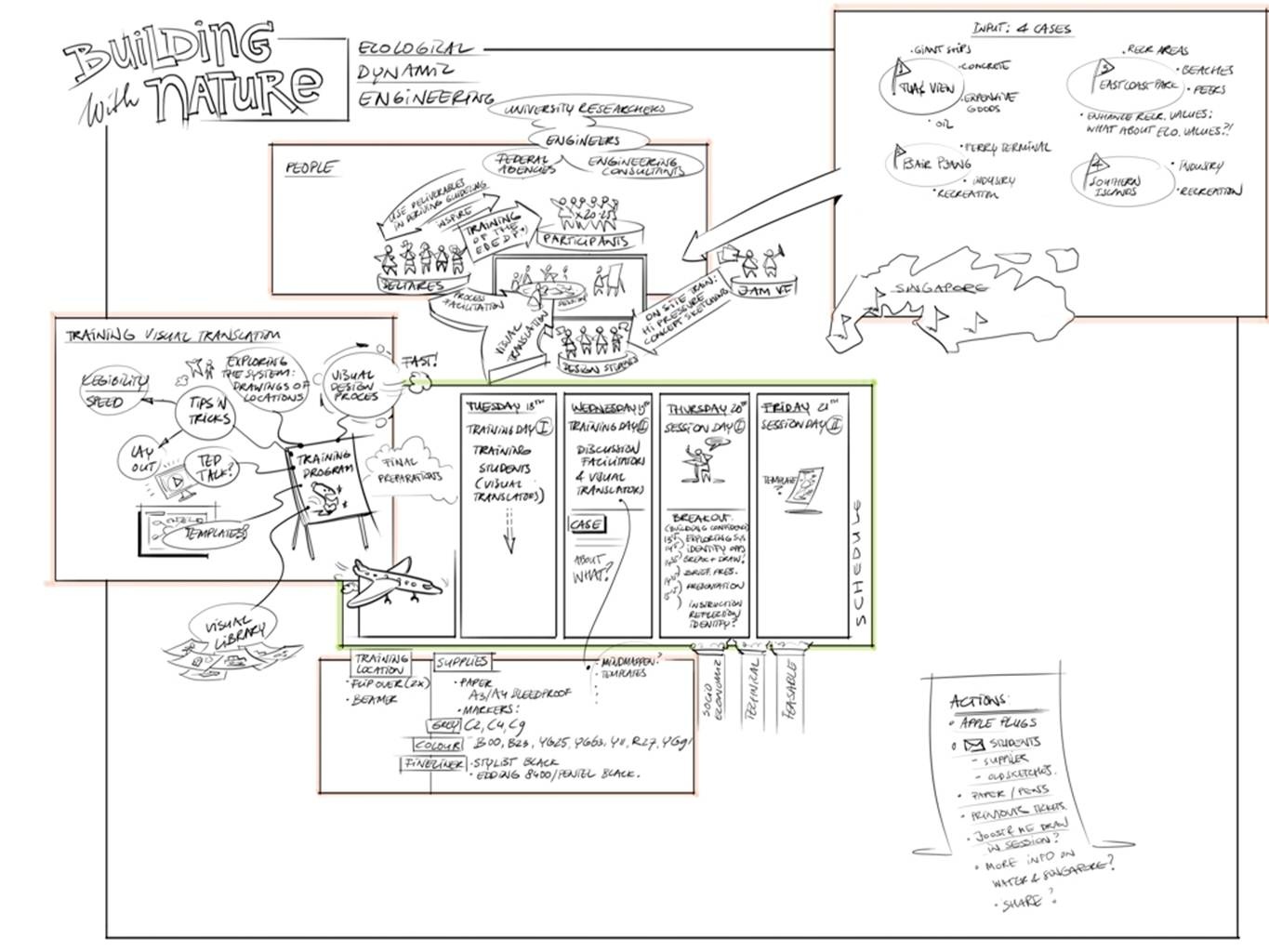About
A good visual translation starts with understanding stakeholder positions and what the essence of the actual issue is. Often this is not clear for many people involved. Visualisation assists in gaining understanding of the problem and its related aspects. By the process of visual thinking the main topic is questioned in order to clarify the issue at stake. Hereby the problem statement is converted into tangible pieces so that coherence can be visualised and missing elements of the issues can be identified. Subsequently, these parts can be discussed and filled in. In addition, visualisation can also be used to entertain or inspire people; this depends on the setting and objectives. Often, organisations describe new ideas simply in words, clear for the designers, but not so easily understandable for others; the thing missing is a clear drawing, showing the concept in one glance. When visualising thoughts, people may find gaps in their plan. Visual thinking helps to finalise the proposal into a more clear design. The result is a holistic drawing or sketch of the issue, which displays the whole state of affairs in one glance. Drawings are often combined with keywords or written explanations in order to raise understanding and increase recognition. The drawing provides an overview of the situation and contributes to effective communication. The tool is applicable in many different kinds of projects, especially when issues at stake have a high level of complexity.
Building with Nature interest

Within Building with Nature projects it is crucial to bring different parties together, to develop new ideas in cooperation with stakeholders and to synthesise group ideas. New concepts need to be disseminated to the wider public in order to settle and grow. This is especially the case, as BwN designs are often ‘soft’ natural measures, which the public is less acquaint with compared to the traditional technical solutions. Visualisations can hereby assist to clarify the BwN concepts, stimulate communication and gain attention from the public. As this method invites stakeholders to become part of the design process, it becomes an ideal mean to inspire people, raise new ideas and develop grounds for creativity. It further assists with clarifying objectives, roles and responsibilities, and mapping different parts of a project in one overview.
Project phases
Visual thinking is valuable in project phases where creativity plays a major role. Therefore, it is probably most effective in the first two phases of a project; the initiation phase and the planning and design phase. In the initiation phase the tool can be seen as an invitation to creative solutions and thinking in wider perspectives. Though, at the same time it can be applied to set clear objectives and to scope the project. In the planning and design phase the tool helps to involve, communicate and interact with actors, stakeholders and experts. By analysis of the situation, one gains better understanding of the system. Furthermore it assists in clarifying roles and responsibilities and to tighten and strengthen the design by identifying white spots in the proposal.
